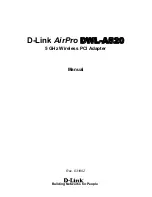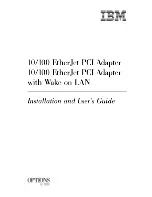
OPTIMOD-PC
INTRODUCTION
1-5
Figure 1-3 shows the relative difference between the absolute peak level and the
indications of a VU meter and a PPM for a few seconds of music program.
The studio engineer is primarily concerned with calibrating the equipment to pro-
vide the required input level for proper operation of each device, and so that all de-
vices operate with the same input and output levels. This facilitates patching devices
in and out without recalibration and ensures that no part of the program chain will
clip the audio.
For line-up, the studio engineer uses a calibration tone at a studio standard level,
commonly called line-up level, reference level, or operating level. Metering at the
studio is by a VU meter or PPM. As discussed above, the VU or PPM indication under-
indicates the true peak level. So the studio standardizes on a maximum program
indication on the meter that is lower than the clipping level, so those peaks that the
meter does not indicate will not be clipped. Line-up level is usually at this same
maximum meter indication.
In facilities that use VU meters, this level is usually at 0 VU, which corresponds to the
studio standard level, typ4 dBu. For facilities using +4 dBu standard level, in-
stantaneous peaks can reach +18 dBu or higher (particularly if the operator over-
drives the mixer). OPTIMOD-PC’s analog input clips at an instantaneous peak level of
+20 dBu, which provides 16 dB of headroom above a +4 dBu line-up level.
In facilities that use the BBC-standard PPM, maximum program level is usually PPM4
for music and PPM6 for speech. Line-up level is usually PPM4, which corresponds to
+4 dBu. Instantaneous peaks will reach +17 dBu or more on voice. In facilities that
use PPMs that indicate level directly in dBu, maximum program and line-up level is
often +6 dBu. Instantaneous peaks will reach +11 dBu or more.
Controlling Program Levels in a Playout System before OPTIMOD-PC
To optimize the consistency of a broadcast or netcast, preprocessing each program
element via OPTIMOD-PC before it is stored on a playout system is not as effective
processing the playout system’s output in real time using OPTIMOD-PC. The latter
technique maximizes the smoothness of transition between program elements and
makes voice from announcers or presenters merge smoothly into the program flow,
even if the announcer is talking over music.
You can help OPTIMOD-PC operate at its best by setting the level of each program
element when you load it into the playout system. Many audio editing programs
permit a sound file to be “peak-normalized,” which amplifies or attenuates the level
of the file to force the highest instantaneous peak to reach 0 dBfs. This is a very
poor way to set the levels of different audio files on a playout system. Absolute
peak levels have nothing to do with loudness, so peak-normalized files are likely to
have widely varying loudness levels depending on the typical peak-to-average ratio
of the audio in the file. Because of over-use of peak limiting in today’s CD mastering
(which has the unfortunate side-effect of sucking the life and punch out of music),
the average level of a CD produced in the ‘80s can be as much as 15 dB lower than
the average level of a CD produced today. When a playout system segues two such
disparate peak-normalized files, this can cause audible loudness inconsistencies in
your broadcast/netcast while OPTIMOD-PC’s AGC section corrects the loudness.
















































